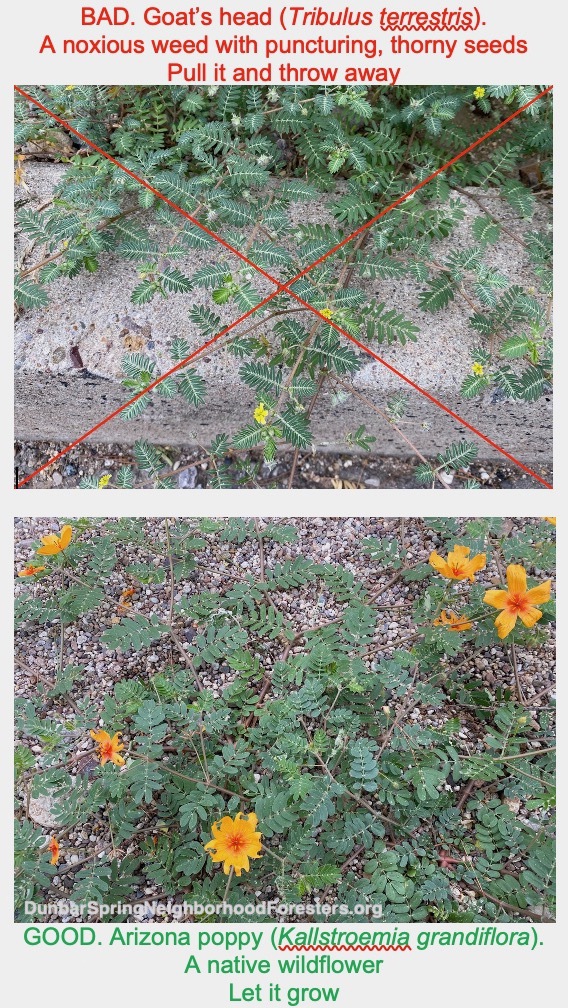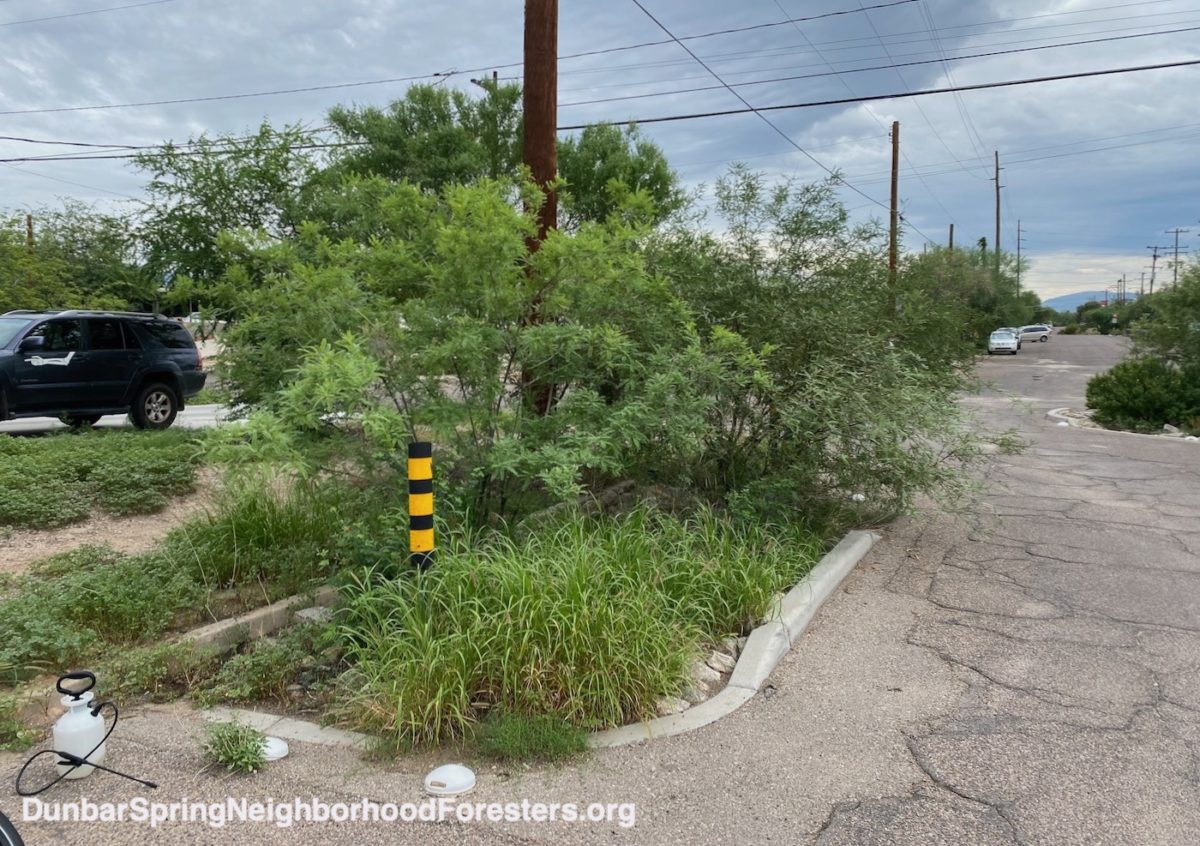Invasive non-native plants to remove in southern Arizona

We do NOT recommend the planting of the following invasive plants in southern Arizona – see links below for photos of the plants.
Instead, plant beneficial native plants, which are far better for our ecosystem and native wildlife.
We recommend the removal of the following invasive non-native plants, then replacing them with beneficial native plants.
Pulling/digging the invasive plant out before it goes to seed is a very effective way to remove them.
With large, established invasive trees it may be good to first plant a native tree successor, get it established, and once it is of good size, then remove the invasive, allowing the native successor to take its place.
Invasive seasonal annuals:
Many of these out compete native wildflowers. But if you weed them out before they seed, and sow native wildflower seed in their place you can bring the wildflowers back! Wildlands Restoration native seed mixes are great for this (available at Spadefoot Nursery, Native Seeds/SEARCH, and more local outlets).
African (Sahara) mustard
(Brassica tournefortii)
See this link, and page nine of this link, for photos and more info
London rocket
(Sisymbrium irio)
See this link, and page 13 of this link, for photos and more info
Feed it to your chickens—they love it—as long as it has not been sprayed with toxic herbicides.
Stinknet
(Oncosiphon piluliferum)
Stinknet Brochure – English (Feb 2020)
Stinknet Brochure – Spanish (Feb 2020)
Russian thistle/Tumbleweed
(Salsola tragus)
See this link for photos and more info
Puncture vine/caltrop/goathead
(Tribulus terrestris)
See this link for photos and more info
Matthiola parviflora
See this link for photos and more info
Invasive grasses:
Bufflegrass
(Cenchrus ciliaris/Pennisetum ciliare)
– Wanted: Bufflegrass Dead and Gone
– Se Busca: Zacate Buffel: Muerto y Fuera
– https://aznps.com/invasive-plants/
Fountain Grass
(Cenchrus setaceus/Pennisetum setaceum)
– See page two at this link for photos and more info
– https://aznps.com/invasive-plants/
Red brome
(Bromus rubens)
See page seven of this link for photos and more info

The spray bottle has herbicide that was used on bermuda grass, after buffle grass was pulled. The bermuda grass is much more difficult to pull than the bufflegrass, especially when its roots (from which the bermuda grass will regrow) grow under street curbs and pavement. We strive to use as little herbicide as possible by being very strategic in its use, and only using it when hand-pulling/weeding won’t work. Can also minimize herbicide use by cutting bermuda grass back if there is a lot of growth, clear away what you’ve cut, then apply herbicide to new green growth as it emerges (when there is no rain expected).
Ideally, you also plant seed of desired native plants in the void spots where you remove weeds. Photo: Brad Lancaster

Trees were also pruned so they don’t block pedestrians, bicyclists, and vehicles. Photo: Brad Lancaster
Invasive shrubs:
Sweet resinbush
(Euryops multifidus)
See this link, and page 20 of this link, for photos and more info
Giant reed
(Arundo donax)
See this link for photos and more info
Invasive trees:
African sumac
(Searsia lancea/Rhus lancea)
See this link, and page 18 of this link, for photos and more info
South American hybrid mesquite, Argentine mesquite
(Prosopis alba),
and Chilean mesquite
(Prosopis chilensis)
See this link for photos and more info
Saltcedar/tamarisk
(Tamarix ramosissiama)
See this link for photos and more info
